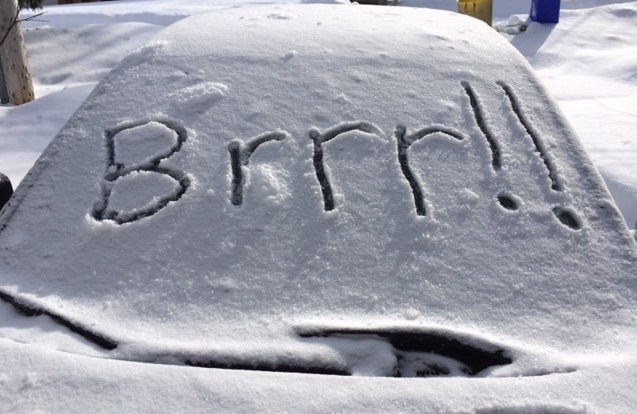Wind chills are expected to drop below minus 40 tonight and tomorrow morning so Environment Canada has issued an extreme cold warning for:
- North Bay - Powassan - Mattawa
- West Nipissing - French River
- Greater Sudbury and vicinity
- South River - Burk's Falls
- Bayfield Inlet - Dunchurch
- Huntsville - Baysville
- Town of Parry Sound - Rosseau - Killbear Park
- Témiscaming area
- Temagami - Temiskaming Shores
A period of very cold wind chills is expected tonight through Wednesday morning as low temperatures of minus 30 to minus 35 create wind chill values near minus 40-46.
In North Bay, the wind chill will reach minus 25 this afternoon, increasing the risk of frostbite.
We'll see a wind chill of minus 38 Wednesday morning and minus 22 in the afternoon.
The definition of extreme cold varies in different parts of the country due to the local climate. Extreme cold warnings for the northern Ontario region are Issued when the temperature or wind chill is expected to reach minus 40°C for at least two hours. Extreme cold events occur when winter temperatures drop significantly below average for that time of the year.
According to Health Canada, risks from exposure to extreme cold, including frostbite, frostnip, and hypothermia, increase at wind chill values below -27°C.
Treatments for extremely cold conditions
Windburn
Do not scratch or rub the affected area--it can damage the skin.
- Apply a protective skincare product (e.g. therapeutic moisturizers) to the affected area(s) as needed to help relieve the symptoms of windburn.
- Use a protective lip balm to treat lips.
Frostbite
Mild frostbite (frostnip) can be treated in two ways:
- Passive warming - move to a warm room, wrap yourself in blankets or reheat your body by skin-to-skin contact with another person.
- Active warming - this can be done along with passive warming. Add heat directly to the frostbitten area. The idea is to thaw the injured skin as quickly as possible without burning yourself. Thawing frostbitten skin is very painful so the injured skin should be placed in water that is just above body temperature. Do not rub, massage or shake the injured skin because that can cause more damage.
Severe frostbite requires immediate medical attention. While you are waiting for help to arrive begin treating it with passive and active warming.
Hypothermia
Severe cases of hypothermia (such as stages 2 and 3) require immediate medical attention. Call 9-1-1 or your local emergency number.
The following treatment options should be followed for stage 1 hypothermia, or while waiting for help to arrive for more severe hypothermia:
- find shelter
- keep your muscles moving
- dry and (gradually) warm your body
- wrap yourself in blankets/dry clothing or reheat your body by skin-to-skin contact with another person
- drink warm, sweet liquids
- don't fight shivering, this is one of the ways your body increases its core temperature
- if the person is unconscious lay them down and avoid shaking them or handling them roughly as they may have an arrhythmia (irregular heartbeat)
Who is most at risk?
While anyone who isn't dressed warmly is at risk in cold weather conditions, some are at greater risk than others for frostbite and hypothermia:
- homeless people
- outdoor workers
- people living in homes that are poorly insulated (with no heat or no power)
- people with certain medical conditions such as diabetes, peripheral neuropathy, and diseases affecting the blood vessels
- people taking certain medications including beta-blockers
- winter sport enthusiasts
- infants (under 1 year)
- seniors (65 years or older)
Risks are greater for young children, older adults, people with chronic illnesses, people working or exercising outdoors, and those without proper shelter.
Cover up. Frostbite can develop within minutes on exposed skin, especially with wind chill.
If it's too cold for you to stay outside, it's too cold for your pet to stay outside.
